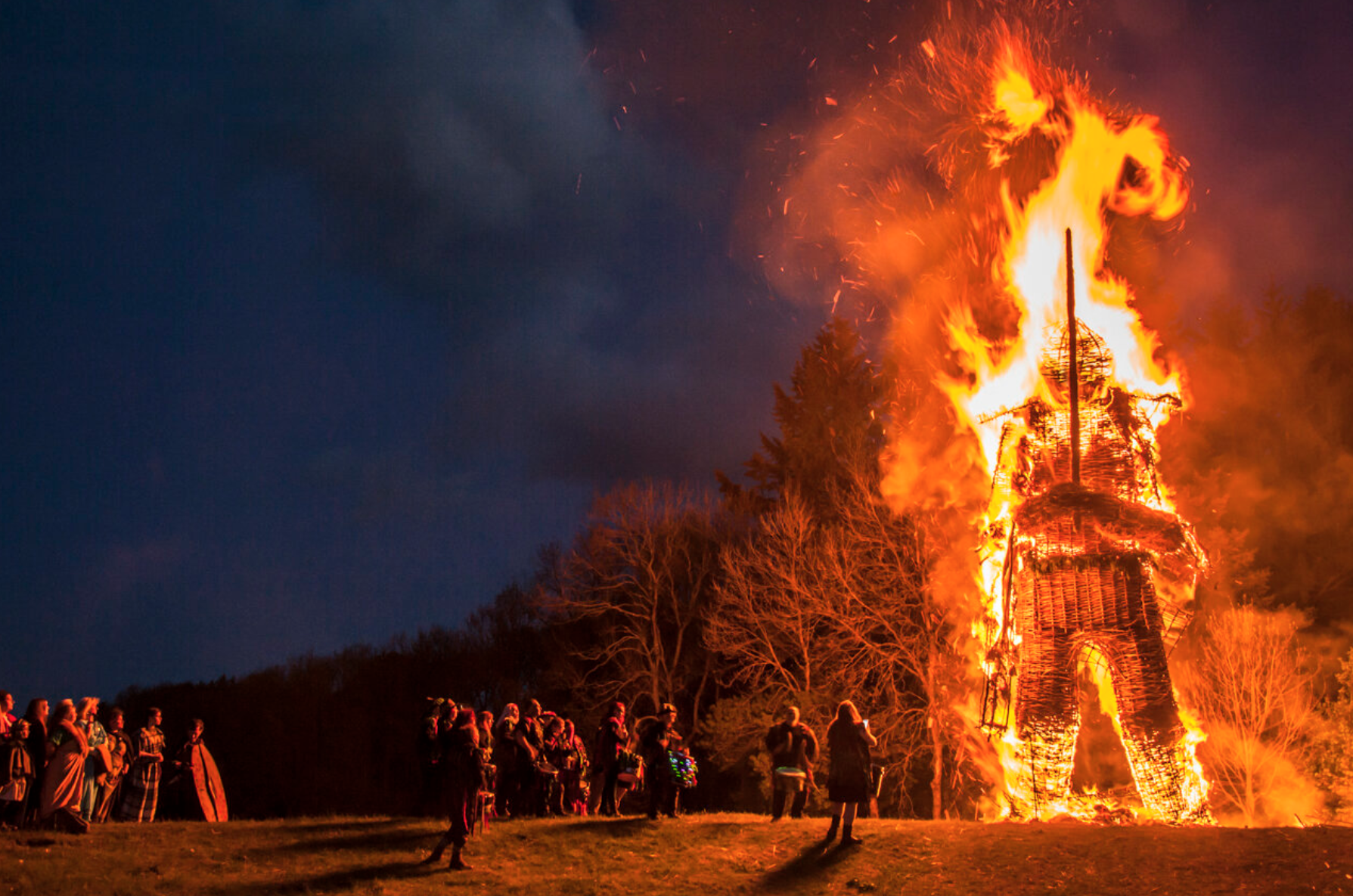Butser Ancient Farm
The farm sits in a small valley, just metres away from the A3 trunk road that roars its way between London and Portsmouth. You’d never guess it was so close—to drive down the dirt track is like being transported into another world, one serenaded by yellowhammers singing in the hedgerows, their golden feathers like turmeric in the morning light. This is Butser Ancient Farm in the South Downs National Park, where rosebay willowherb tumbles out of the earth like coils of pink rope, and adders sunbathe, hidden, in heaps of firewood.
At the heart of the farm is the Iron Age village that Butser has become most famous for, a cluster of six roundhouses with roofs like pointed witches’ hats against the sky. What is this place? The internet might indicate a museum or education center, but the truth is more ambiguous. It’s an archaeological research site, specialising in the construction of ancient houses using their archaeological footprints and sustainable materials. In one morning you can explore 10,000 years of British history, from the Stone Age longhouse, through to the Roman villa and Saxon mead hall—all with a cup of coffee in hand and plenty of time to greet the rare breed pigs, sheep and goats that lounge about in the sun.
To the south, at the base of a steep hill, the interior walls of the Neolithic longhouse are marked with wall paintings, streaks of umber pigment replicating a hunting scene from an archaeological dig in Turkey. On the northern edge of the farm, the Roman villa stands white and cool, complete with handcrafted mosaic, underfloor heating, and a walnut tree in the garden that is said to bring on a ‘heaviness of the head’, according to Pliny the Elder, if one sits beneath it for too long. And at the far end of the site, the Saxon mead hall glows with heat from the fireplace, a favourite roosting spot for one of the farm’s barn owls who shelters in the timber roof on dark winter nights.
Both staff and volunteers are drawn to this place through their love for an older, slower way of being. They are passionate, often eclectic, but never boring. In one day you might meet a woman weaving tapestries by the roundhouse fire, while the clink clink clink of the blacksmith echoes through the air as he forges a new sword. Elsewhere, a Roman cook drizzles honey over a batch of freshly grilled figs in the villa kitchen, as the treewright finishes hewing another timber beam in the Saxon workshop. You can smell the warmth of sleeping goats, the elderflower blossom and fire smoke, all caught in a time capsule that seems so very distant from the chaos of the modern world.
In spring, the biggest event of the Butser calendar takes place, rooted in the Celtic wheel of the year and the festival that marks the beginning of summer. Beltain (or Beltane) is held around 1st May, halfway between the spring equinox and summer solstice. At Butser, it’s a time to welcome in longer, warmer days, celebrated with live music, dancing, drumming, real ale and cider, crafts, local food, storytelling and ancient skills. As the sun sets, the festival finishes with the burning of a 30ft Wickerman, an inferno of cleansing fire and raging heat. Hundreds of people come together to bask in the Wickerman's flames, cider in hand, drummers beating their rhythm into the night, as each guest dares to escape modernity for a few short hours, hidden away in the dark wilderness of the South Downs landscape.














